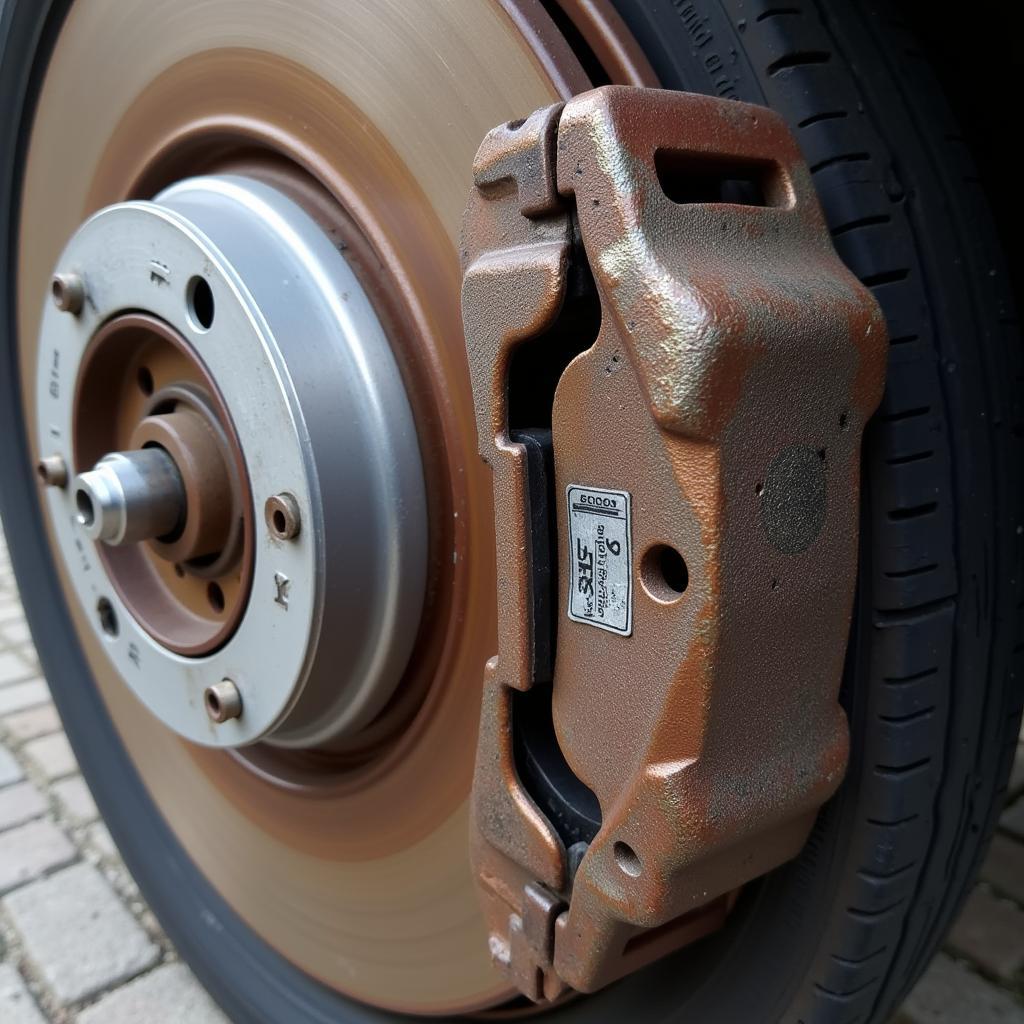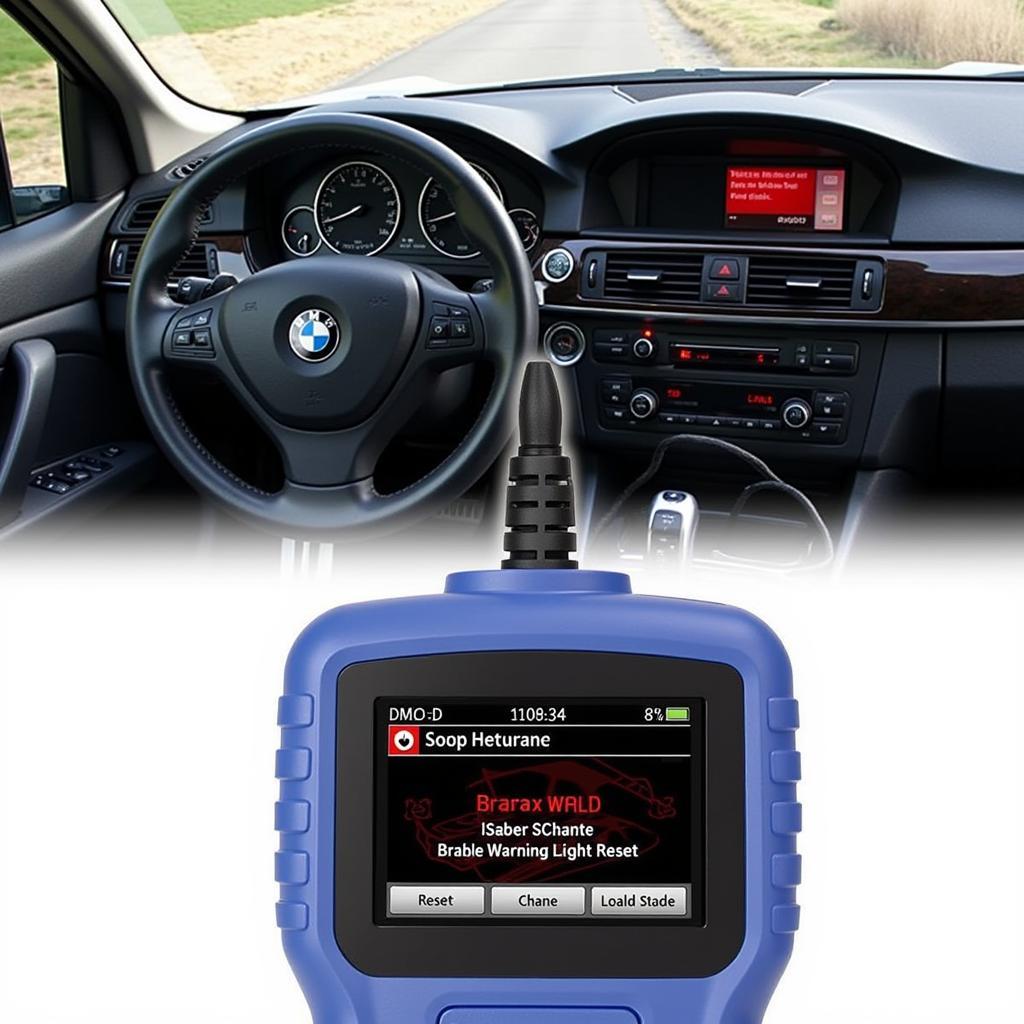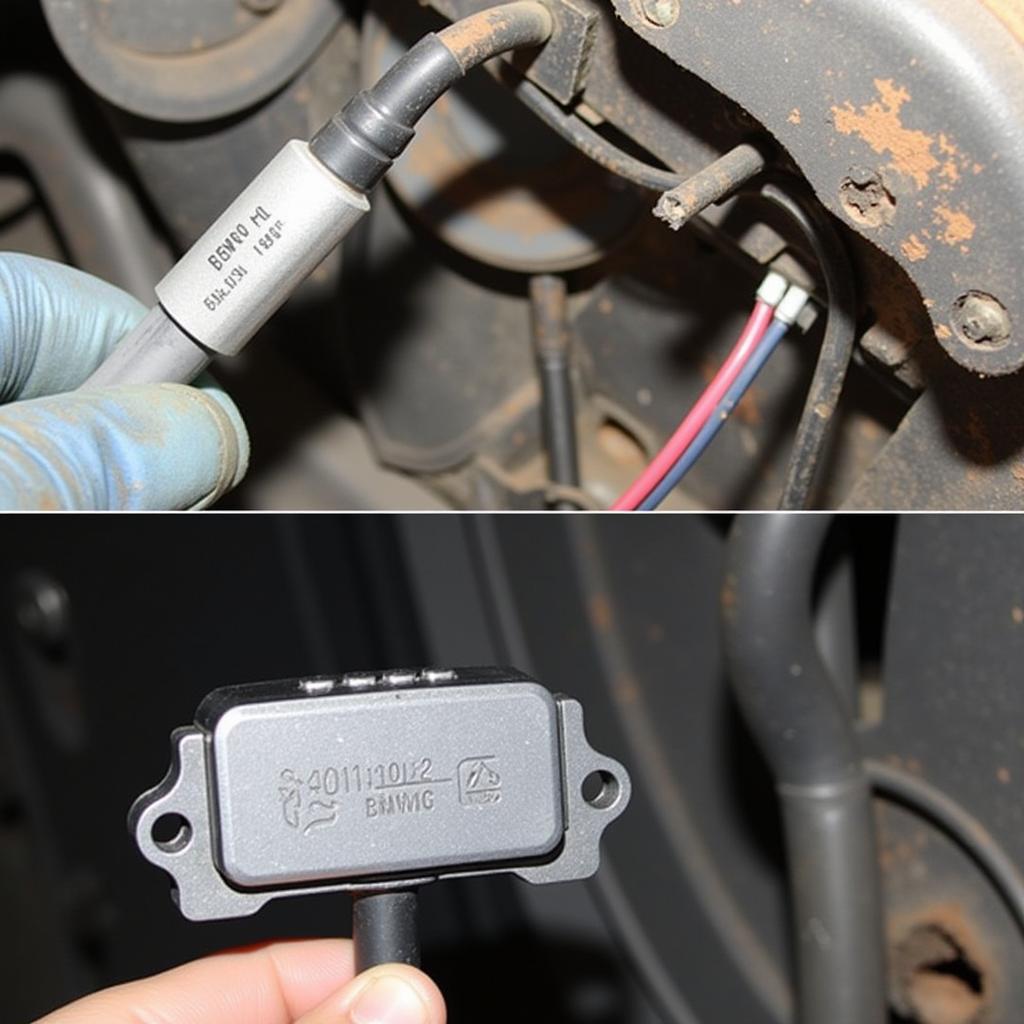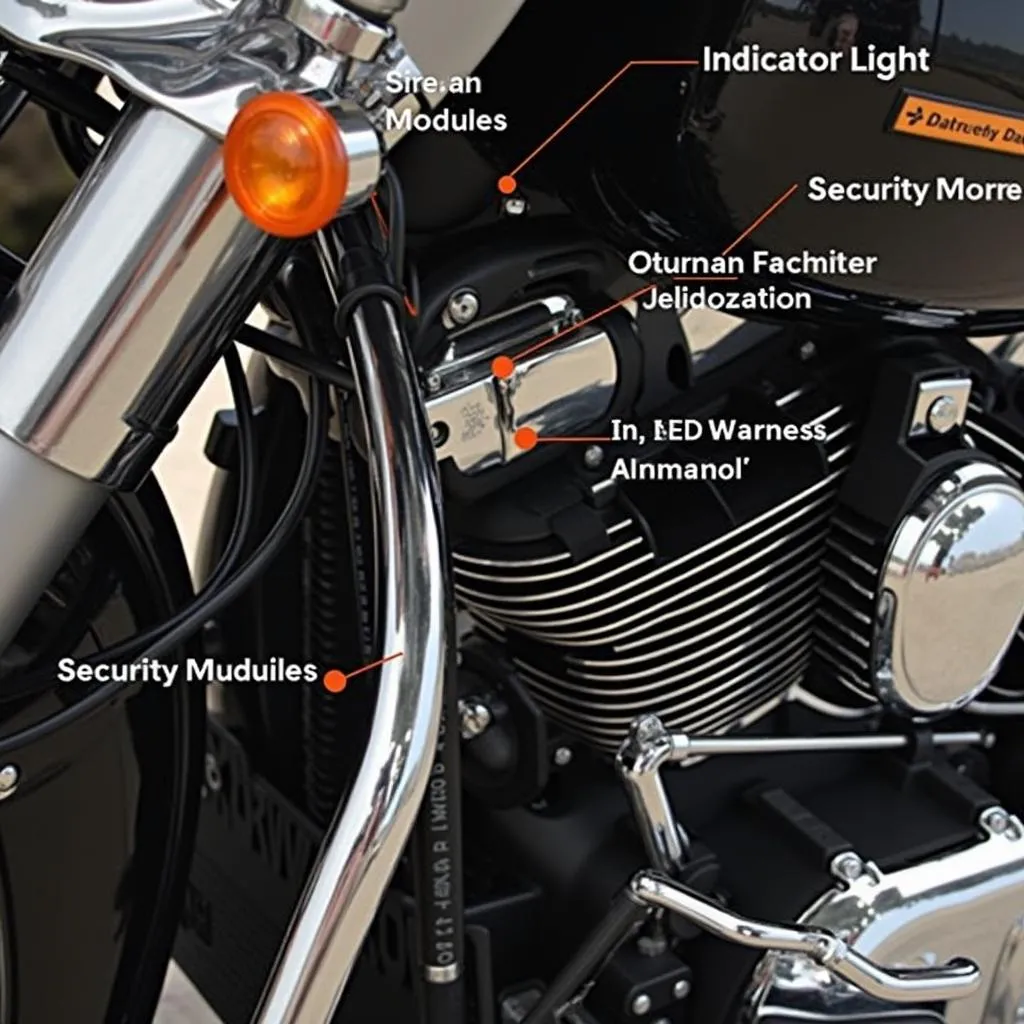Resetting the brake pad warning light on your BMW 320d can seem daunting, but with the right knowledge and tools, it can be a straightforward process. This guide provides a detailed walkthrough, covering various methods from DIY techniques to professional diagnostic tools, ensuring you can address this issue effectively. We’ll explore the underlying reasons for the warning light, the steps involved in resetting it, and when professional help might be necessary.
See our guide on resetting the BMW brake warning light for the E46 for more specific instructions for that model.
The brake pad warning light is a crucial safety feature, alerting you when your brake pads are worn and need replacing. Ignoring this warning can lead to significant safety risks, including reduced braking performance and potential damage to your braking system. Understanding how to reset this light after replacing your brake pads is essential for maintaining your BMW 320d’s safety and performance.
Understanding the BMW 320d Brake Pad Warning Light
The brake pad warning light on your BMW 320d illuminates when the sensors embedded within the brake pads detect they’ve reached their minimum thickness. These sensors are vital for preventative maintenance, prompting you to replace your brake pads before they wear down completely and compromise your braking power.
Why is my brake pad warning light on?
The most common reason is worn brake pads. However, faulty sensors, wiring issues, or even a low brake fluid level can also trigger the light. Diagnosing the exact cause is crucial before attempting a reset. Check your brake pad thickness visually. If they look thin, it’s time for a replacement.
 Worn brake pads on a BMW 320d
Worn brake pads on a BMW 320d
Resetting the Brake Pad Warning Light: DIY Methods
Several methods exist for resetting the brake pad warning light on your BMW 320d, ranging from simple manual resets to using specialized diagnostic tools.
Manual Reset Procedure
For some older BMW 320d models, a manual reset might be possible. This typically involves a sequence of button presses and key turns within the car. However, this method is not universal and may not work on all models. Consult your owner’s manual for specific instructions.
Using a Diagnostic Scanner
A diagnostic scanner is a specialized tool that connects to your car’s onboard computer, allowing you to read and clear fault codes, including the brake pad warning light. While these scanners can be purchased for personal use, they are commonly used by professional mechanics. This method offers a more reliable reset compared to manual methods.
You can find more information on BMW front brake pad warning lights in our dedicated guide.
 Resetting the brake pad warning light using a diagnostic scanner on a BMW 320d
Resetting the brake pad warning light using a diagnostic scanner on a BMW 320d
When to Seek Professional Help
While DIY methods can be effective, certain situations warrant professional assistance. If you’re unsure about the cause of the warning light, or if you’ve replaced the brake pads and the light persists, it’s best to consult a qualified mechanic. They have the expertise and tools to diagnose and resolve more complex issues, ensuring your braking system is functioning correctly.
“Regular brake maintenance is paramount for safety,” says John Smith, Senior Automotive Technician at Bavarian Auto Experts. “Don’t hesitate to seek professional help if you encounter any issues with your braking system.”
Troubleshooting Persistent Warning Lights
A persistent warning light even after replacing the brake pads could indicate a faulty sensor, wiring problem, or an issue with the braking system itself. Professional diagnosis is crucial in these cases to pinpoint and rectify the underlying problem. Ignoring a persistent warning light can lead to further damage and compromise your safety.
For a broader perspective on brake system warning lights, you can refer to our comprehensive guide.
 BMW 320d brake pad sensor and wiring
BMW 320d brake pad sensor and wiring
Conclusion
Resetting the brake pad warning light on your BMW 320d is a crucial part of brake maintenance. Understanding the various methods and recognizing when professional help is necessary ensures your vehicle’s safety and performance. Regular brake checks and timely replacements are essential for safe driving, and addressing the warning light promptly is a key part of this process. Don’t delay in taking action if your BMW 320d brake pad warning light comes on. For specific instructions on the E46 model, see our guide on the BMW 320d E46 brake warning light reset.
FAQ
- How often should I check my brake pads? It’s recommended to check your brake pads every 10,000-20,000 miles, or as recommended in your owner’s manual.
- Can I drive with the brake pad warning light on? While you can technically drive a short distance, it’s highly discouraged. Driving with worn brake pads compromises your stopping power and can damage your rotors.
- How much does it cost to replace brake pads on a BMW 320d? The cost varies depending on the type of brake pads and labor rates, but typically ranges from $200-$500.
- What tools do I need to replace brake pads? You’ll need basic hand tools, a jack, jack stands, and potentially specialized tools for specific BMW models.
- Is it difficult to replace brake pads myself? While it’s possible to do it yourself, it requires some mechanical knowledge. If you’re unsure, consult a professional.
- What happens if I ignore the brake pad warning light? Ignoring the warning light can lead to severely worn brake pads, potentially damaging the rotors and other brake components, resulting in costly repairs. It also significantly compromises your safety.
- Can a low brake fluid level trigger the brake pad warning light? Yes, in some cases, a low brake fluid level can trigger the brake pad warning light. Always check your brake fluid level when inspecting your brakes. You can also find helpful information on our BMW 320d brake pad warning light reset guide.
“Addressing the brake pad warning light promptly is a small investment for your safety and peace of mind,” adds Maria Garcia, Lead Mechanic at Euro Auto Specialists.



